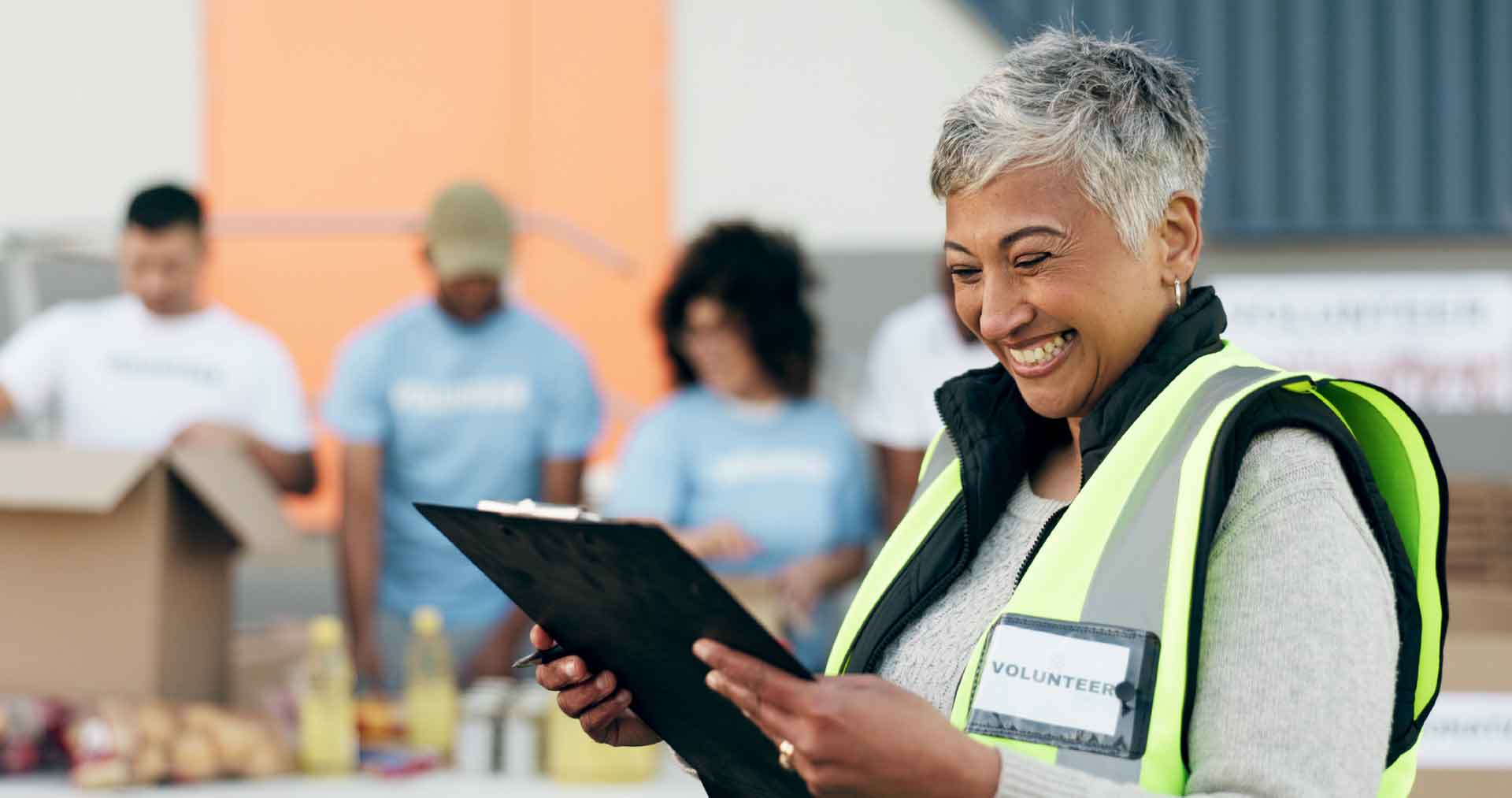Silver Hands, Full Hearts: Seniors Fighting Hunger
By Jane Miller | Senior Privacy News | September 18, 2025

Every weekday morning, seniors suit up—not with briefcases or laptops, but with gloves and aprons, ready to take on one of the most pressing challenges facing their communities: hunger. From coast to coast, older adults have become the backbone of America’s food banks, transforming donated goods into lifelines for families and forging lasting connections in their neighborhoods.
Food banks have come to rely on seniors as their most steadfast volunteers. Nearly 1 in 3 food bank volunteers is aged 60 or older, reflecting the deep commitment retirees feel to giving back—and their communities’ growing need for support in the face of rising food insecurity. Nonprofit agencies, such as Second Harvest Food Bank of Orange County and the Jacobs & Cushman San Diego Food Bank, report that thousands of older adults sort and pack fresh produce, manage food distributions, and deliver meals to the homebound each month.
Quick Facts
1 in 3 food bank volunteers is 60+ years old
Seniors help reach nearly 14 million Americans facing food insecurity and loneliness each month
85% of food banks rate seniors as their “most reliable” volunteers
Health and Well-Being Benefits
Volunteering at food banks is good for more than just the soul. Seniors who volunteer regularly are much less likely to report feelings of isolation and have a lower risk of depression and frailty. Warehouse activities—like packing grocery staples or greeting guests—keep older adults moving, supporting physical health and helping maintain independence. Social connection blossoms in these settings, too: Volunteers find camaraderie and purpose through teamwork, and seniors especially cherish the chance to form new friendships while helping others.
How Seniors Make a Difference
Senior volunteers bring a wealth of skills and compassion to the food bank floor:
- Sorting and packaging fresh foods and pantry staples
- Delivering meal boxes to fellow seniors and the homebound
- Greeting new visitors and making them feel welcome
- Supporting emergency and holiday programs that reach thousands at seasonal high points
The emotional rewards are clear. As Deborah, a retired volunteer in Contra Costa County, shares, “I’ve always had food my entire life… but when I see the looks on some of the people here, I know that’s not true for a lot of Americans. I want to be there to make a difference in their lives.”
Comparison: On-Site vs. Delivery Volunteering for Seniors
| Role Type | Social Interaction | Physical Activity | Flexibility | Direct Impact |
|---|---|---|---|---|
| On-site | High | Moderate | Fixed hours | Supports many |
| Delivery | Moderate | Moderate to High | More flexible | Serves individuals |
Facing Barriers—And Building Community
Transportation, mobility, and health can present real hurdles for senior volunteers, but food banks are adapting. Many offer gentle activity options—seating, lighter tasks, and roles in teams—so volunteers remain engaged whatever their limitations may be. Mobile food bank programs and seasonal pop-up events create opportunities for seniors to participate even if they aren’t able to commute regularly. Volunteering is also flexible: older adults can work with family, friends, or through senior community centers, ensuring anyone who wants to help, can.
Food banks are increasingly aware of the need for support tailored to seniors. Outreach programs, dedicated volunteer coordinators, and peer networks help new volunteers join and adjust, especially for those returning to service after retirement or health challenges.
Voices from the Frontlines
Food bank leaders consistently cite seniors as their organizations’ foundation. “Without our senior volunteers, we wouldn’t reach half as many families,” says a coordinator at Second Harvest Food Bank of Orange County. Volunteers echo this sentiment: “Giving back is what keeps me active and feeling connected. You help your neighbors, you help yourself,” shares an LA Food Bank volunteer.
Another retired volunteer in the Bay Area sums it up: “It’s the best job I’ve ever had—no paycheck, just smiles and thanks. And that’s more than enough.”
As demand for nutritional support climbs—especially among fellow seniors—the dedication, reliability, and compassion of older volunteers remain essential.
Key Takeaways
- About one third of food bank volunteers are seniors
- Volunteering helps older adults reduce loneliness, stay active, and find new friendships
- Seniors play critical roles from packing food to delivering meals and welcoming guests
- Food banks offer flexible support and roles for volunteers regardless of health or mobility
- The emotional and physical rewards of giving back at food banks are celebrated across the country
Disclaimer
This article is for informational purposes only. Seniors concerned about deepfake scams should seek support from trusted organizations and never send money without verifying requests. Not intended as legal or financial advice.
References
- Feeding America, Food Bank Volunteer Statistics (2025): https://www.feedingamerica.org/take-action/volunteer
- Second Harvest Food Bank of Orange County (2025): https://feedoc.org/get-involved/
- San Diego Food Bank, Hunger Facts (2025): https://www.sandiegofoodbank.org/about/hunger-facts-research/
- Contra Costa & Solano Counties Food Bank, Impact Report (2024): https://www.foodbankccs.org/about/financials/2024-impact-report/
- Meals on Wheels America Senior Hunger Data (2025): https://www.mealsonwheelsamerica.org
- United Way Senior Volunteering Statistics (2025): https://www.unitedway.org/news/25-great-ways-volunteering-is-good-for-older-adults
- HandsOn San Diego direct report/interview (2025): https://www.handsonsandiego.org
- LA Food Bank Volunteer Information (2025): https://www.lafoodbank.org/volunteer/